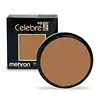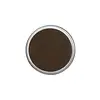What's inside
What's inside
 Key Ingredients
Key Ingredients

 Benefits
Benefits

 Concerns
Concerns

 Ingredients Side-by-side
Ingredients Side-by-side

Propylene Glycol Dicaprylate/Dicaprate
EmollientIsononyl Isononanoate
EmollientOzokerite
Emulsion StabilisingVp/Hexadecene Copolymer
Myristyl Lactate
EmollientSorbitan Sesquioleate
EmulsifyingPetrolatum
EmollientTocopheryl Acetate
AntioxidantPunica Granatum Juice Extract
Skin ConditioningAloe Barbadensis Leaf Extract
EmollientEthylhexyl Hydroxystearate
EmollientSilica
AbrasiveCI 77891
Cosmetic ColorantCI 77491
Cosmetic ColorantCI 77492
Cosmetic ColorantCI 77499
Cosmetic ColorantCI 77007
Cosmetic ColorantCI 77288
Cosmetic ColorantCI 15850
Cosmetic ColorantCI 19140
Cosmetic ColorantPropylene Glycol Dicaprylate/Dicaprate, Isononyl Isononanoate, Ozokerite, Vp/Hexadecene Copolymer, Myristyl Lactate, Sorbitan Sesquioleate, Petrolatum, Tocopheryl Acetate, Punica Granatum Juice Extract, Aloe Barbadensis Leaf Extract, Ethylhexyl Hydroxystearate, Silica, CI 77891, CI 77491, CI 77492, CI 77499, CI 77007, CI 77288, CI 15850, CI 19140
Caprylic/Capric Triglyceride
MaskingIsoamyl Laurate
EmollientPetrolatum
EmollientTalc
AbrasiveEthylhexyl Palmitate
EmollientCopernicia Cerifera Wax
Beeswax
Emulsion StabilisingKaolin
AbrasiveOzokerite
Emulsion StabilisingC18-38 Alkyl Hydroxystearoyl Stearate
EmollientPhenoxyethanol
PreservativeCI 77491
Cosmetic ColorantCI 77492
Cosmetic ColorantCI 77499
Cosmetic ColorantCI 77891
Cosmetic ColorantCI 77288
Cosmetic ColorantCI 77289
Cosmetic ColorantCI 73360
Cosmetic ColorantCI 77007
Cosmetic ColorantCI 19140
Cosmetic ColorantChromium Hydroxide Green
Caprylic/Capric Triglyceride, Isoamyl Laurate, Petrolatum, Talc, Ethylhexyl Palmitate, Copernicia Cerifera Wax, Beeswax, Kaolin, Ozokerite, C18-38 Alkyl Hydroxystearoyl Stearate, Phenoxyethanol, CI 77491, CI 77492, CI 77499, CI 77891, CI 77288, CI 77289, CI 73360, CI 77007, CI 19140, Chromium Hydroxide Green
Ingredients Explained
These ingredients are found in both products.
Ingredients higher up in an ingredient list are typically present in a larger amount.
CI 19140 is also known as Tartrazine. Tartrazine is a synthetic dye used in cosmetics, foods, and medicine to add a yellow color.
Tartrazine is created from petroleum and is water-soluble.
Some people may experience allergies from this dye, especially asthmatics and those with an aspirin intolerance.
Learn more about CI 19140This pigment is called Ultramarine blue lazurite. It gives a saturated blue color, but can be used to create other colors as well.
According to the manufacturer, it is usually made from kaolin, sodium sulfate, sodium carbonate, sulfur, and charcoal.
Ci 77288 is used to add green pigment to products.
Ci 77491 is also hydrated iron III oxide. It's sole purpose is to give a red/pink hue to products.
Iron III oxides are classified as inorganic chemicals for coloring.
Synthetically created Ci 77491 is considered safer than those naturally found. This is because the synthetically created version may contain less impurities. Iron oxides are generally non-toxic and non-allergenic.
Learn more about CI 77491Ci 77492 is also hydrated iron III oxide. It's sole purpose is to give a yellow hue to products.
Iron III oxides are classified as inorganic chemicals for coloring.
Synthetically created Ci 77492 is considered safer than those naturally found. This is because the synthetically created version may contain less impurities. Iron oxides are generally non-toxic and non-allergenic.
Learn more about CI 77492Ci 77499 is also hydrated iron III oxide. It is created from mixing red and black iron oxides. This helps give shades of darkness to a product.
Iron III oxides are classified as inorganic chemicals for coloring.
Ci 77891 is a white pigment from Titanium dioxide. It is naturally found in minerals such as rutile and ilmenite.
It's main function is to add a white color to cosmetics. It can also be mixed with other colors to create different shades.
Ci 77891 is commonly found in sunscreens due to its ability to block UV rays.
Learn more about CI 77891Ozokerite is a naturally occuring mineral wax. In cosmetics, ozokerite is used as a texture enhancer.
Ceresin wax is derived from this ingredient.
The melting point of ozokerite is 58-100 C.
Ozokerite is found all over the world including Scotland, the US, and India.
Learn more about OzokeritePetrolatum is more commonly known as petroleum jelly. It is created by mixing waxes and mineral oils.
This ingredient is effective at reducing water loss by 99%. This is because it is an occlusive. Occlusives create a hydrophobic barrier on the skin to prevent evaporation. This property makes it great for hydrating dry skin.
Pro tip: Use occlusives, such as this ingredient, on damp skin for the best results.
The quality or origin of petrolatum is only known when disclosed by the brand. Most cosmetic petrolatum has gone through several purification stages.
Another benefit of occlusives is it protects your skin against infection or allergies.
Petrolatum may not be safe for fungal-acne. Studies show mineral oil / petroleum leads to the growth of M. Furfur, a type of yeast.
Learn more about Petrolatum